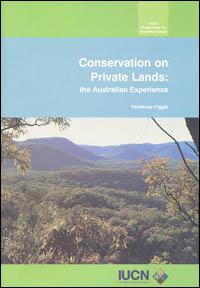Australia's rich and distinct biodiversity is under multiple threats including loss of habitat to human settlement, agriculture and grazing, introduction and spread of alien invasives, pollution, altered fire regimes and landclearing. The landclearing rate of c. 500,000 hectares p.a. is comparable to the worst African, South American and Asian de-forestation rates, much occurring on private lands. This paper gives a brief survey of the ecological and social factors driving the increasing emphasis on private lands in the national biodiversity effort. It also reviews some of the key mechanisms being explored to augment the formal parks system to stem the decline and result in long-term biodiversity gains. With a huge range of programmes and mechanisms being trialed, this paper presents a comprehensive overview
Includes bibliographic references. Based on a paper prepared for the "Privately Owned Protected Area Workshop", 5th World Parks Congress, Durban, ZA, 8-17 September 2003.

